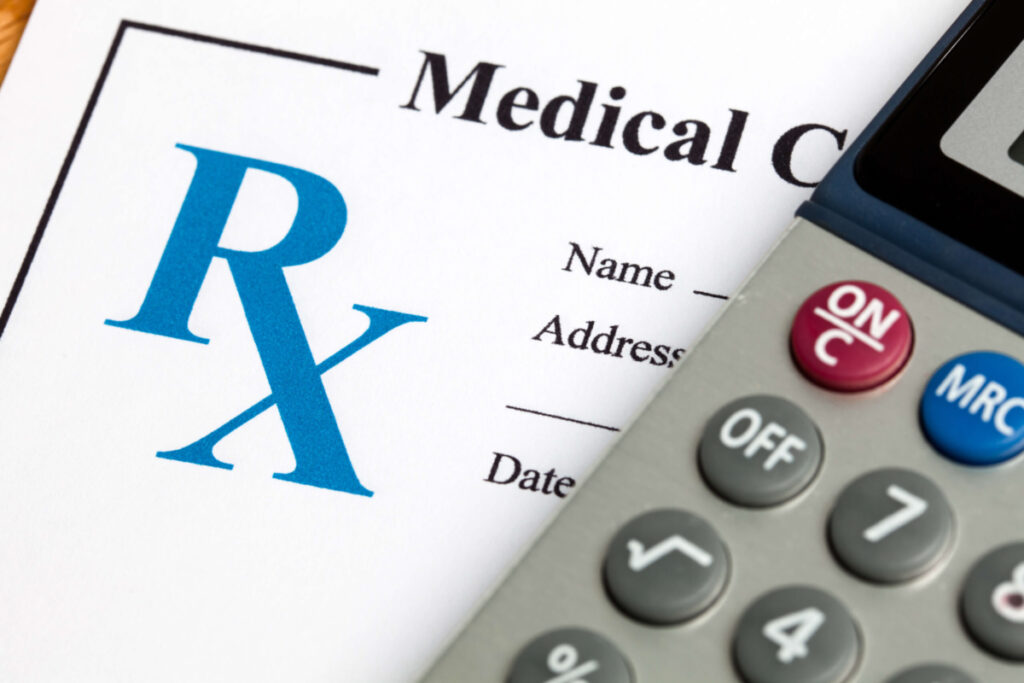The National Academy for State Health Policy (NASHP), a non-profit, nonpartisan forum of policymakers, is issuing this request for proposals (RFP) to identify a consultant to provide centralized resources including educational materials, data, and analyses, to states that have created prescription drug affordability boards (PDABs). Proposals are due by 5 p.m. ET, Tuesday, July 26, 2022. Download the RFP (PDF).
Background
NASHP is a nonpartisan organization committed to developing and advancing state health policy innovations. With funding from Arnold Ventures, NASHP operates the Drug Pricing Center and supports states working to lower prescription drug costs through innovative legislative and administrative strategies.
With guidance from a national workgroup of state leaders, NASHP released model legislation for states to create Prescription Drug Affordability Boards (PDABs) in 2017. Since that time, six states have enacted some form of PDAB: Maryland, Colorado, Maine, New Hampshire, Oregon, and Washington- and many other states continue to advance legislation. NASHP convenes a PDAB advisory group of state leaders from all of the states that have enacted a PDAB. This advisory group meets regularly to talk about where they are, exchange ideas, and talk about their needs to successfully implement a PDAB.
Though there is variation across PDABs, several PDABs share core responsibilities that can be categorized as follows:
- Educate PDAB Board members, and Advisory Board members as needed, on topics of interest, including but not limited to prescription drug pricing and policy, the U.S. drug supply chain, and the clinical and economic evaluation of prescription drugs.
- Identify costly prescription drugs for potential Board review through research and data analysis and develop criteria for selecting specific prescription drugs for affordability reviews (e.g. consumer impact).
- Define an analytical approach for reviewing prescription drug affordability and conduct drug affordability reviews accordingly.
- When authorized by state law, develop consistent and transparent criteria for setting upper payment limits (UPLs) as deemed appropriate pursuant to the drug affordability review conducted by the PDAB.
In lieu of setting UPLs, other PDABs are charged with the following tasks:
- Setting prescription drug spending targets for public payers
- Recommending policy options to maintain drug spending levels below targets
Purpose
Faced with many responsibilities and with limited budgets, PDABs need access to centralized resources including educational materials, data sources and analyses, and related support. NASHP is seeking a consultant that has the expertise to provide these services to states to support successful completion of the responsibilities identified above.
Importantly, the intent of this partnership is to bring assistance to PDAB states to scale where possible. This will be achieved by identifying and realizing opportunities to provide materials, research, analysis, and other assistance across states rather than in silos. This partner will bring value to states by creating efficiencies, allowing states to free up scarce resources rather than duplicating similar efforts.
Project Management
Clear and consistent communication with NASHP and states is a must to successfully execute this work. NASHP will facilitate this communication with regular meetings with the consultant and PDAB states, both virtual and in-person. States’ needs will dictate the exact deliverables to be completed under this opportunity, and these deliverables must be approved by NASHP prior to execution. Priority will be given to work that can be duplicated or used across states, for example, the development of relevant methodologies or educational materials that could be used by multiple states. Work will be reimbursed in agreement with the selected party based on a monthly invoice.
Expectations
This contract will require flexibility to serve multiple states on similar tasks, by providing technical assistance and directly conducting data analysis and reviews to individual states and to groups of states, as needed. The latter may require an additional contract or data use agreement directly with a state to enable necessary data-sharing. The consultant will meet routinely with states and NASHP to develop and execute a workplan, including a schedule of deliverables, based on the priorities and process described above. The awardee should be available for in-person and virtual meetings with NASHP and PDAB states, and virtual or in-person site visits with individual states, along with monthly calls with NASHP and PDAB states.
Time Period and Key Dates
The time-period for this 16-month contract will be September 1, 2022, to December 31, 2023, with the possibility for renewal. Ideally, the awardee should be available to join an in-person meeting with NASHP and states at NASHP’s annual conference in Seattle, Washington, to be scheduled sometime September 12-14, 2022. Additional meetings will be scheduled at later dates.
RFP Timeline
June 14, 2022 NASHP releases request for proposals
June 21, 2022 Deadline for interested parties to submit questions to NASHP
(Submit to the attention of Jennifer Reck at jreck@nashp.org)
June 28, 2022 NASHP publishes response to questions (see responses below)
July 26, 2022 Proposals due to NASHP by 5 p.m. ET
(Submit to the attention of Jennifer Reck at jreck@nashp.org)
August 12, 2022 NASHP notifies successful respondent
Sept. 1, 2022 Contract start date
Sept. 12-14, 2022 Contract awardee meets with PDAB states and NASHP at NASHPs annual conference in Seattle, Washington
How to Respond
Responses should be submitted to Jennifer Reck (jreck@nashp.org) by 5 p.m. ET on Tuesday, July 26, 2022, and should be no more than five single spaced pages with 1-inch margins and 12-point font, excluding appendices such as sample work products (e.g., reports, presentations, and/or data analyses) which can be shared in addition.
In your proposal, please explain:
- Your approach to providing states with the common tools and resources necessary to successfully implement PDABs
- Your ability to either consult on or to conduct the tasks identified above; or your ability to do either
- Your knowledge of and access to necessary data sources
- Your experience with prescription drug pricing analyses, including, if applicable, cost-effectiveness and/or pharmacoeconomic analyses, and claims-based analyses
- Your familiarity with the U.S. prescription drug market and supply chain, including prescription drug reimbursement models
- Your experience working with state officials and/or with state legislation
- Your hourly rate and anticipated available hours/month for completing this work in service of PDAB-implementing states
Download the RFP (PDF)
Questions and Answers
- Is the primary focus of the work performed pursuant to this RFP mostly educational and assisting state PDABs preparing for meetings and presentations?
No, the RFP may encompass work beyond education, meeting preparation, and presentations. In issuing this RFP, NASHP is seeking a contractor with the ability to provide specialized services, including the data analysis necessary to help states identify unaffordable drugs, perform affordability reviews, and establish upper payment limits.
- What criteria will NASHP use in awarding a contract to the successful respondent?
NASHP and state partners will evaluate proposals based on responses to the following criteria:
- Your approach to providing states with the common tools and resources necessary to successfully implement PDABs
- Your ability either to consult on or to conduct the data analysis required to implement PDABs, or your ability to do both
- Your knowledge of and access to necessary data sources to implement PDABs
- Your experience with prescription drug pricing and utilization analyses, including, if applicable, cost effectiveness and/or pharmacoeconomic analyses, and claims-based analyses
- Your familiarity with the U.S. prescription drug market and supply chain, including prescription drug reimbursement models
- Your experience working with state officials and/or with state legislation
- Your hourly rate and anticipated hours/months for completing this work in service of PDAB-implementing states
- Will NASHP consider proposals that are joint efforts between two organizations?
Yes, NASHP would consider joint proposals, but such proposals would need to clearly establish how the work would be divided between the two parties and identify who would be responsible for which deliverables.
- Does NASHP anticipate the award of a contract to a single respondent as a result of this RFP, or is there the potential for multiple awards?
NASHP may issue awards to more than one contractor, depending on the skills and capabilities reflected in the pool of proposals received.
- Does an interested party need to specify an overall budget in its proposal, or target a desired budget total?
No, proposals do not need to include an overall budget however proposals should include an hourly rate and anticipated hours/months for completing this work.
- Is there an incumbent for this work? If so, who is the incumbent?
No, there is no incumbent for this contract with NASHP.
- Does NASHP have a sample contract or “Terms & Conditions” it can share with interested parties?
NASHP uses standard contract language for all of its vendors. Our standard contract will be shared with the successful bidder with enough time for their review as we work out the details of the agreement.
- What is the process for a bidder to request an exception to a contract term or condition?
The successful bidder may request exceptions to specific terms or conditions as part of contract negotiations if mutually agreeable.
- Can NASHP provide an example(s) of requests, deliverables, or data analyses previously provided to the PDAB Advisory Group?
As this is a new contract with no incumbent contractor, NASHP does not have example requests, deliverables, or other documents to share. Some states, however, have public links to work performed by contractors supporting state PDABs. See, for example, work products produced for Maryland and for Colorado.
- Does NASHP currently subscribe to any reference data products that can be shared with the contractor? If not, should these costs be included in the proposal?
No, NASHP does not subscribe to data products that could be shared with the contractor. If interested parties do not have access to these data products, they should include projected acquisition costs in their hourly rate.
- Can you elaborate on what kind of data NASHP would want from the various data sources?
PDAB states are required to look at different data sources and examine different data elements depending on their enabling statutes and Board’s direction. For example, PDAB states may require wholesale acquisition cost (WAC) data as well as claims data (typically through a state all payer claims database (APCD)). WAC-specific data is necessary as many of the legislative triggers to perform an affordability review involve a drug product exceeding a specified WAC threshold. States would also be interested in other data related to drug spending, including reported or estimated rebate information. Links to state statutes with further details can be found in this chart comparing state PDAB laws.
- To what extent will the vendor be required to seek data use agreements/conduct analytics for all six states under this contract? Or is the expectation that the vendor would separately contract with each state for analytics?
The contract will be executed in two phases. In the first phase, the contractor will work closely with NASHP and PDAB states to determine their needs and how to meet those needs in a manner that will benefit multiple states. The second phase will be to execute the workplan developed during the first phase. It will therefore not be known until after phase one if further data use agreements or separate contracts would be required.
- Will states send raw data to the contractor or will the contractor be provided access to aggregate reports?
The exact data sharing structure is to be determined. NASHP expects that either approach may be possible, depending on the PDAB state.
- What is the volume of expected data analysis requests per year per member states and NASHP?
This will be determined in the first phase of this work in which the contractor coordinates with NASHP and states to determine states’ needs, the contractor’s capacity, and how the contractor can best meet states’ needs in a manner serving multiple states.
- What type of analyses would NASHP want — comparing the cost/benefit of various therapy options? Pro-forma of the cost of various options over a specific time period?
In the initial phase of the contract, the awardee will work closely with NASHP and PDAB states to identify what types of analyses would be most useful and to establish appropriate timelines. While the enabling legislation in each state creates clear parameters that must be followed, there is likely room for the awardee to suggest analyses for consideration by NASHP and states that could help achieve states goal of implementing effective PDABs.
- Instead of conducting data analytics for the multiple states directly, could the vendor propose developing detailed measure specifications, programming code, and providing technical assistance to states for conducting their own data analysis?
Yes, this approach would also be acceptable.
- How many meetings are expected with NASHP and state staff each year? How many of these are expected to be in person?
NASHP anticipates monthly virtual meetings with the awardee, NASHP, and states in combination with an in-person meeting in Seattle, Washington at NASHPs Annual Conference September 12-14, 2022, with the possibility for an additional multi-state in-person meeting and individual site visits as needed.
- Will the contract reimburse the contractor’s travel expenses for in-person meetings with NASHP and/or individual states?
Yes, NASHP will reimburse travel expenses for in-person meetings with NASHP and PDAB states, including NASHP’s Annual Conference in September 2022.
Questions and Answers for This RFP
NASHP invited interested parties to submit questions by June 21, 2022. See answers to these questions.




